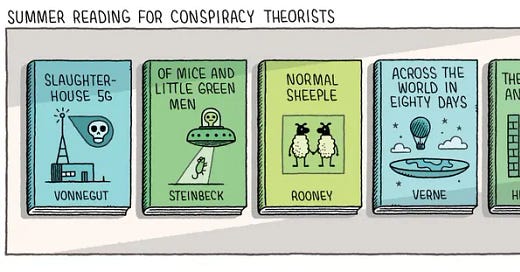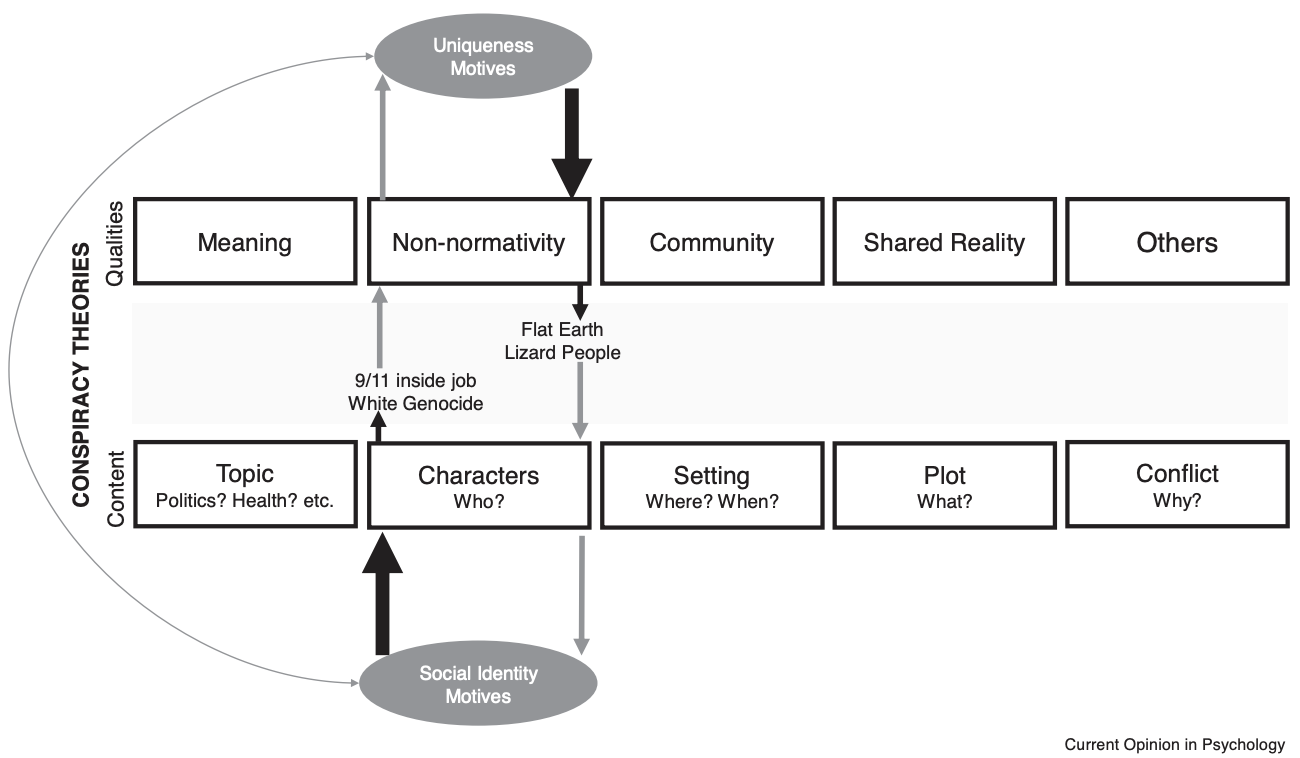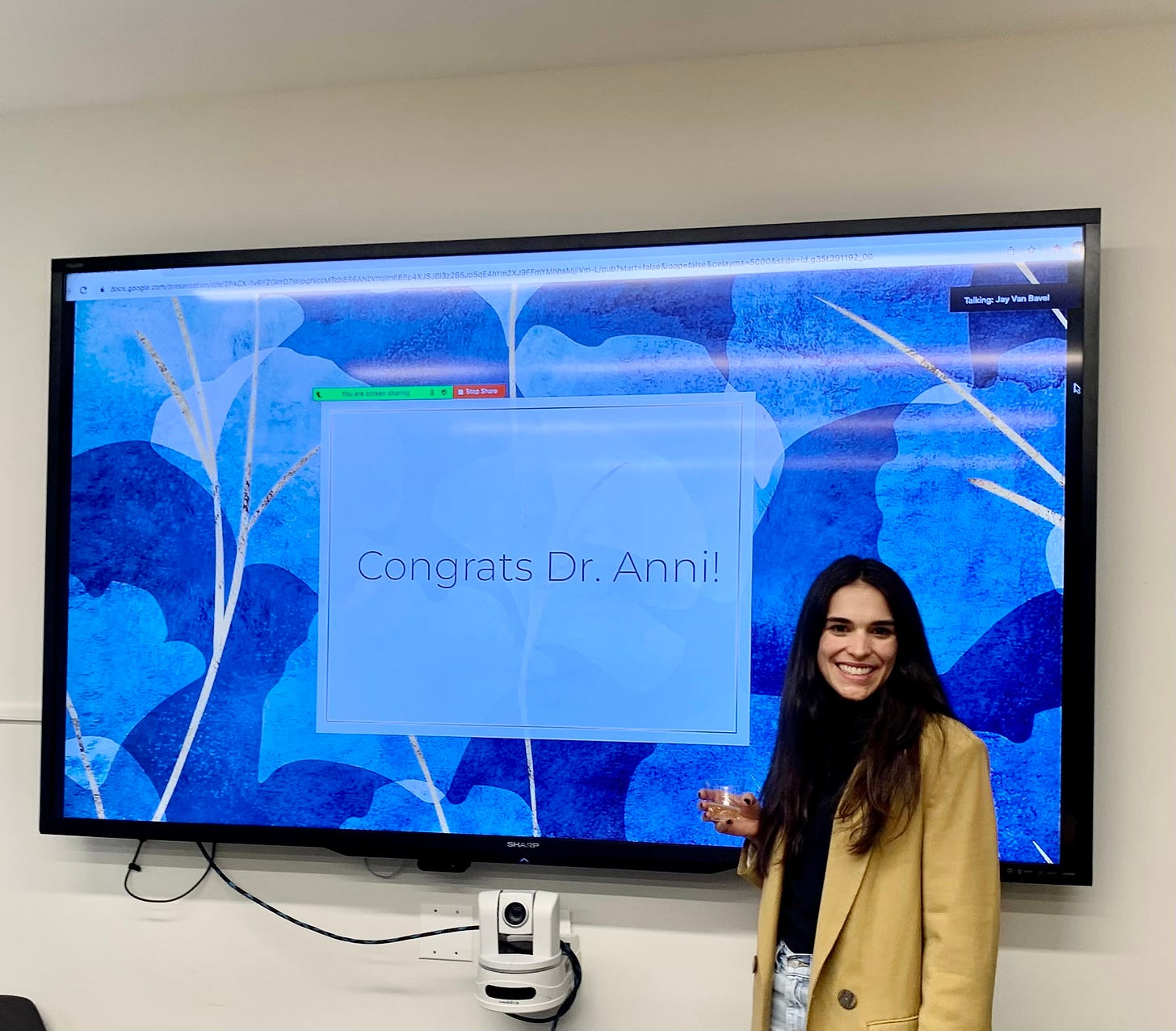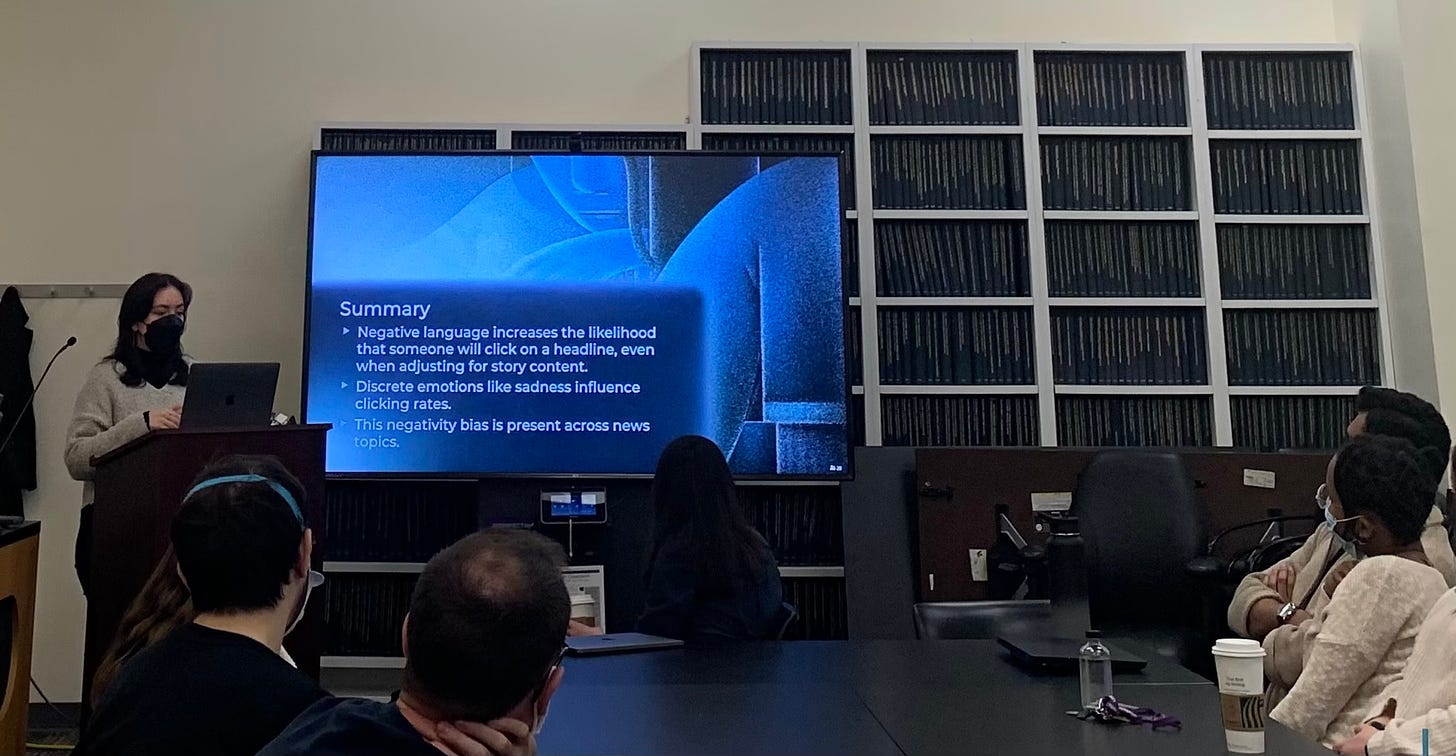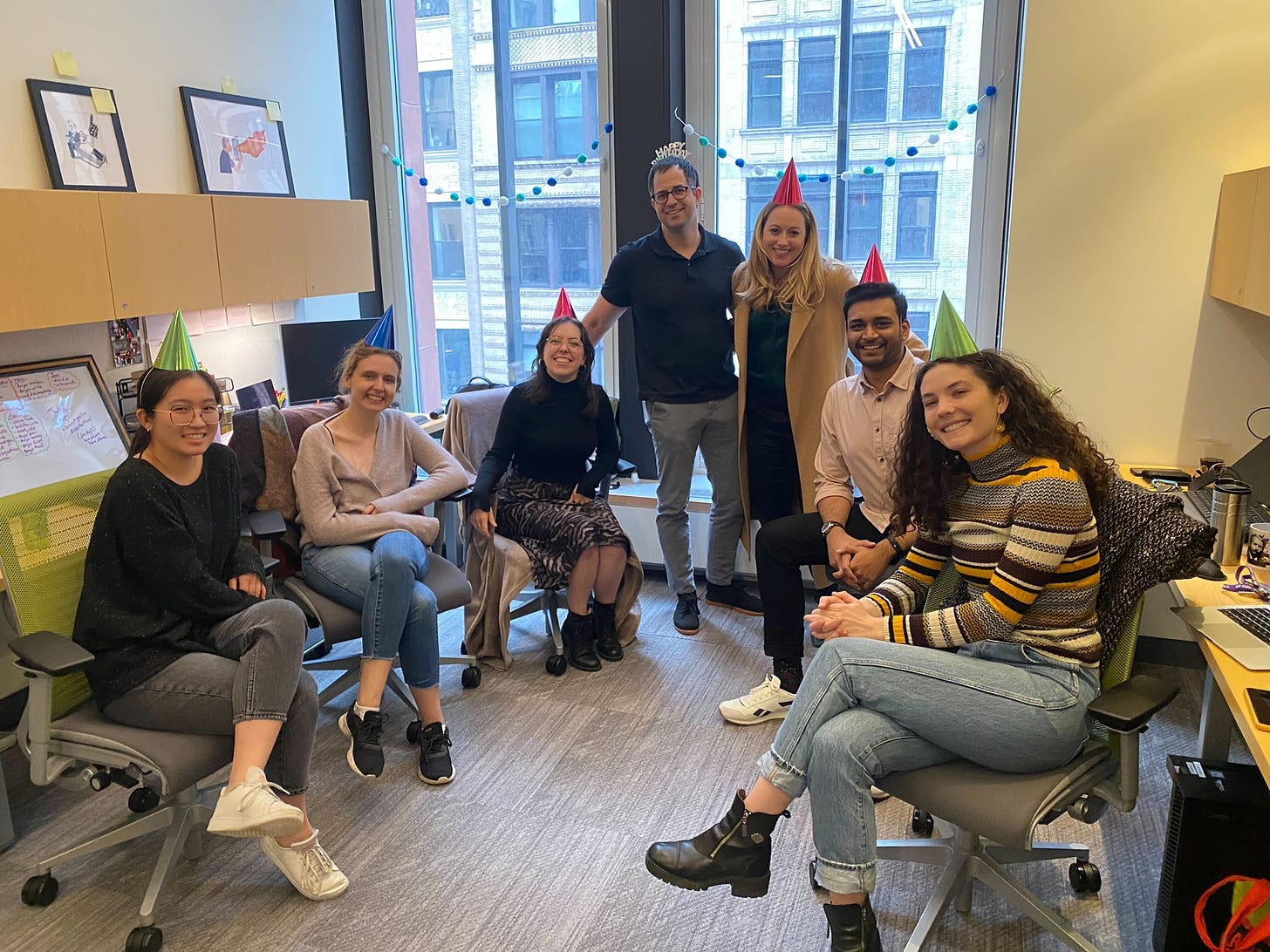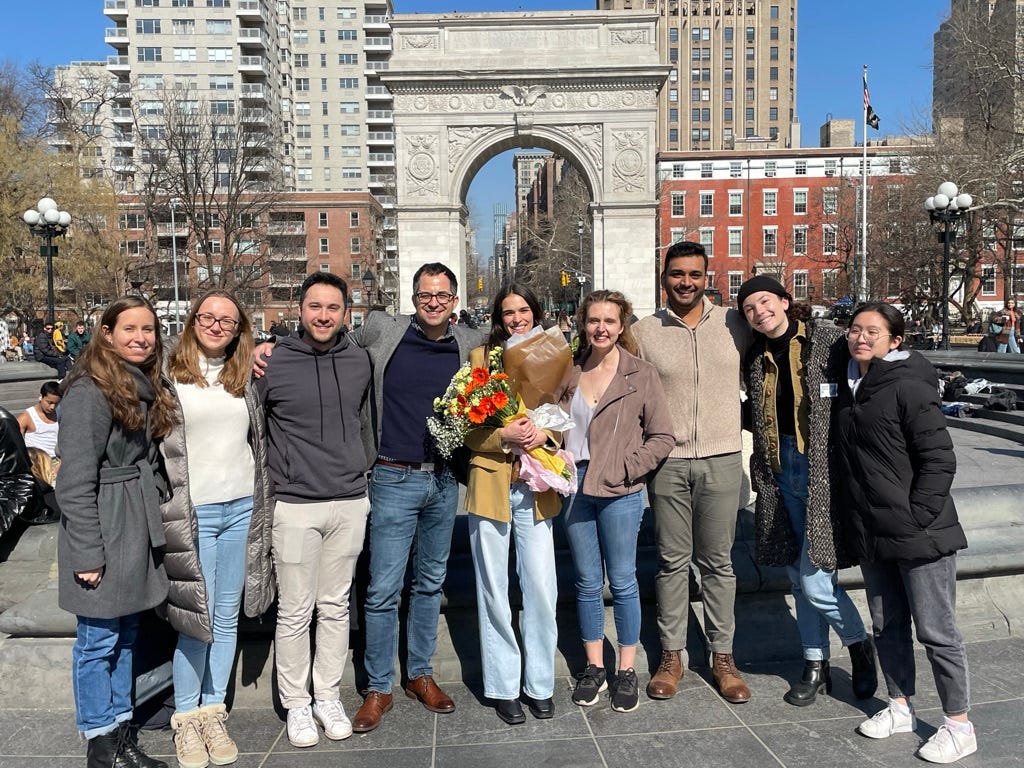The psychology of conspiracy theorists
Exploring the work of our lab's newest PhD, new research on Russian trolls, polarizing language and gender biases in algorithms, and how you can learn about your behavior on social media
One morning during her long train ride from Brooklyn to NYU, lab member Anni Sternisko stumbled across a New York Times article about the infamous conspiracy theorist Alex Jones. He was being sued for circulating one of his conspiracy theories. The lawsuit was not for one of his strange, but (relatively) harmless conspiracies (like how satanists are taking over America), but for a falsehood with serious and deeply harmful consequences. Jones was being sued by the parents of the victims of the Sandy Hook shooting for promoting the idea that it was all a hoax.
Shocked that people could believe and perpetrate this conspiracy theory about such a tragic, horrific event, Anni immediately began scouring the internet and literature to learn everything she could about conspiracy theories and what draws people to believe them (her reading list looked a little like the one below, from the great Tom Gauld). In an instant, she became fascinated with understanding the minds of conspiracy theorists—and importantly, how we can stop the spread of conspiracies and the suffering they cause.
Not too long after that train ride, she transferred into the Social Identity & Morality Lab, and spent the next three years of her PhD focused on exploring this important question: How do conspiracy theories emerge, spread, and manifest in society?
Dr. Sternisko successfully defended her PhD last month, presenting her work on three projects that culminated in a deeper understanding of the psychological pathways to conspiracy theories. We are so proud of her, and wanted to share a small sample of insights from her work that might help you understand conspiracy theorists a bit better:
Why are people drawn to conspiracy theories?
In order to understand the psychology of conspiracy theorists, we have to understand the motives that draw people to conspiratorial beliefs, and how these motives relate to the conspiracy theories people are drawn to. In 2020, Anni, Aleksandra Cichocka, and Jay and colleagues proposed that conspiracy theories contain at least two components: qualities and content:
The qualities of a conspiracy theory consist of properties such as giving believers a sense of meaning, or being non-normative. The content of a conspiracy theory consists of elements like the topic of the conspiracy or the characters involved. Anni and colleagues argued that people are drawn to conspiracies based on these two components, and these components appear to people differently based on their motivational states.
The need for uniqueness tends to drive people to conspiracy theories on account of their qualities, such that the theory satisfies this need (for example, the “non-normative” quality of the conspiracy that the moon landing was fake). On the other hand, social identity motives tend to draw people to the content of conspiracies (for example, particular “characters,” such as sinister out-group political actors).
These motivations also have implications for different types of movements and political behavior. Anni and colleagues argued that social identity motives may drive conspiracy movements that are concerned with a loss of status, as well as those that advance political and intergroup aggression. Uniqueness needs, however, may be relevant for understanding people’s engagement in fringe movements, or why these people are drawn to movements with anti-democratic norms.
Of course, in the real world, people are driven by many different motives and these motives interact with one another. But understanding what psychological motives drive people to conspiracy theories—and the relationship between these motives and theories—is critical to understanding how to stop their spread. You can read the full paper on this framework here.
You can watch Anni’s dissertation defense below to hear about the rest of her work—including the influence of randomness perception on belief in conspiracies and the effect of national narcissism on the belief and dissemination of conspiracies about COVID-19:
Congrats, Dr. Sternisko!
New Research
Have you ever wondered how trolls spread conspiracy theories and other misinformation online? This month, Jay published a new paper in PNAS Nexus led by Almog Simchon and former lab member Billy Brady on the polarizing rhetoric Russian trolls and partisans use on social media. The study analyzed a huge body of data and found that this polarizing language increasing over time—and it enhances engagement. We also created and validated a dictionary of polarizing language that other people can easily use when analyzing online data.


Postdoc and soon-to-be NYU professor Madalina Vlasceanu has a new preprint out (with David Amodio) that investigates how algorithms may propagate existing social disparities. With data from over 50 countries, they found that greater national-level gender inequality was associated with more male-dominated Google image search results for the keyword person. In a series of subsequent experiments, they found that these outputs guided the formation of gender-biased prototypes and influenced the hiring decisions of human participants. Read the preprint to learn more:

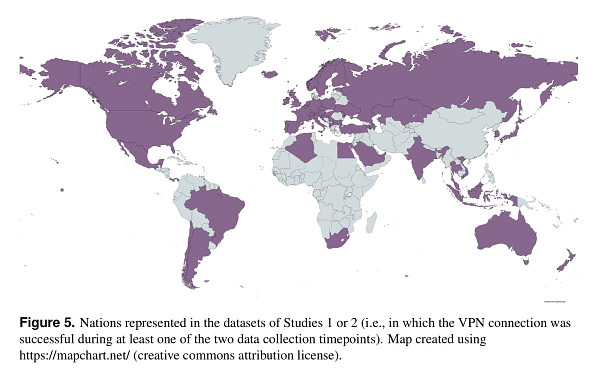
Learn about your behavior on social media
How well do you know your Twitter profile? Incoming postdoc Steve Rathje created a tool that can help you gain deeper insight into your online behavior. By sharing your Twitter handle, you’ll get feedback on how much fake news you’ve shared, what kind of language you use, and the political slant of your tweets, among other insights. Plus, you’ll be contributing to research that will help us better understand people’s behavior on social media. You can try it out for yourself here and share your results with your own social network to compare your online behavior!


We plan to create more interactive and educational content from our research for the Participation page of our website—if you have a suggestion or idea for something you’d like to see, feel free to leave a comment on this post or send an email to Katie at nyu.vanbavel.lab@nyu.edu.
In the media
Steve Rathje was recently featured on the Why Are We So Angry podcast to talk about the psychology of fake news.
The Beautiful Truth interviewed Jay in this excellent video on polarization, intellectual humility, and how we can influence the groups we are a part of. You can watch a short video clip below or follow the link for the full video.

PNAS Nexus
The new journal Proceedings of the National Academy of Sciences NEXUS released its first issue this month! Jay is an editor of this open-access, interdisciplinary journal, and its focus is on innovation and rapid publication. You can submit your work to the journal here.
Post-bacc job opportunity at NYU
Our neighbors at NYU’s Hartley Lab are hiring a post-baccalaurate Junior Laboratory Associate to work on studies examining learning, memory, and decision-making across development! The position is expected to start summer 2022 and is a great opportunity to gain research experience for grad school. You can apply to the position here.
Lab member shoutouts
This month, PhD student Claire Robertson gave the first in-person NYU Social Psych program Brown Bag talk since 2019! Her talk, “‘If it Bleeds, it Leads’: Negativity in Online News Consumption” showcased her research on negativity bias in news consumption (using data from the Upworthy Research Archive). Her paper was conditionally accepted for publication as a registered report at Nature Human Behaviour. You can read more about her work on our website.
Former MA thesis student Simran Kaur just accepted a position at Stony Brook University as a Survey Research Analyst! While in the lab, Simran was supervised by former postdoc Victoria Spring, and her thesis explored how people project moral and pragmatic judgments onto their future selves.
And finally, former research assistant Cheryl Man was recently accepted into the Cornell University Master’s in Information Science program! Cheryl was an RA in the lab for several years, working on a project (led by former PhD student Diego Reinero and former postdoc Philip Pärnamets) investigating how moral attitudes change throughout conversations.
New lab
After many years and many memories in Meyer 455, the lab has officially moved in across the hall to a room with giant windows overlooking Broadway with lots of natural light! During the move we celebrated Jay’s birthday with macarons, party hats, and lots of La Croix (a JVB staple).
As we say farewell to Anni, here’s a picture of her defense celebration with the lab at Washington Square Park. She is now sharing psychology with the United Nations!
In case you missed the last newsletter…

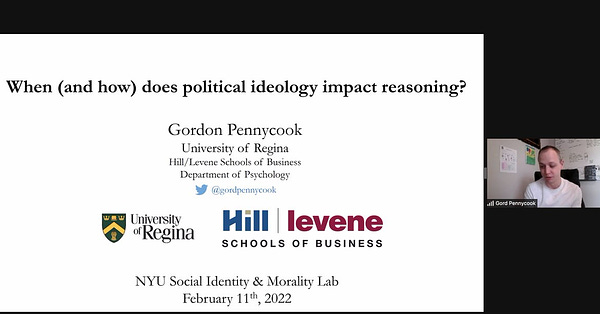
As always, if you have any photos, news, or research you’d like to have included in this newsletter, please reach out to Katie (nyu.vanbavel.lab@gmail.com). We encourage former lab members and collaborators to share exciting career updates or job opportunities—we’d love to hear what you’re up to and help sustain a flourishing lab community. Please also drop comments below about anything you like about the newsletter or would like us to add.
That’s all, folks—thanks for reading and we’ll see you next month!

